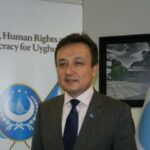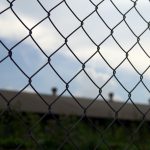End Forced Organ Harvesting: An Interview With DAFOH’s Sophia Bryskine

An exhibition of actual human corpses that’s currently being shown at the Moore Park Byron Kennedy Hall is causing public outrage. Real Bodies: The Exhibition features the display of 20 cadavers and over 200 human organs preserved through plastination in China.
Critics of the exhibition are calling for its closure, as they hold grave concerns that the bodies on display might actually be those of Chinese death row inmates or murdered prisoners of conscience.
The presenters of the exhibition, US-based company Imagine Exhibitions, claim that the corpses are not those of prisoners and that the specimens were legally donated. However, they have no documentation to prove the origins of the bodies.
NSW Greens MLC David Shoebridge suggested to NSW police commissioner Mick Fuller that the exhibition could possibly breach section 81C of the Crimes Act 1900, which makes improperly interfering with a corpse a crime liable to up to two years imprisonment.
This is not the first time, however, that the origins of the human remains on display in Sydney have been questioned. Nor is it the first time that the illegal practice of trading in human body parts in China come under public scrutiny.
Trading in tissue
The Western world was made aware that the practice of removing the organs of executed inmates was taking place in China, when in 2001 Dr Wang Guoqi testified before a US government committee that he’d been involved in these operations.
But it wasn’t until 2006 that reports began emerging about the state-sanctioned practice of removing organs from living prisoners of conscience, so they can be sold to both local and foreign patients.
The 2007 Matas and Kilgour Report found that there was a steep rise in organ harvesting over the five year period after the Chinese government began detaining thousands of Falun Gong practitioners in labour camps in July 1999.
The authors of the report concluded that the evidence suggests that systematic organ harvesting in China is specifically targeting the followers of the Buddhist-Taoist meditation movement that was first taught publicly in 1992.
The 2016 Bloody Harvest/ The Slaughter report puts the number of forced organ transplants being carried out in China every year at around 60,000 to 100,000.
Curbing the global trade
On May 3, the NSW upper house passed the Modern Slavery Bill 2018, which contains a NSW Greens amendment that makes “trading in tissue” a modern slavery offence. If passed by the lower house, this will be a first time an Australian parliament has taken steps to address the global organ trade.
Mr Shoebridge said the new law would “ensure that organ trading is not involved in supply chains, meaning corporations would need to be able to prove they, and their international suppliers, are not using organs or tissues that come from black markets or are the result of trafficking.”
Campaigning against organ harvesting
Doctors Against Forced Organ Harvesting (DAFOH) Australia spokesperson Sophia Bryskine welcomes this development. Her organisation has been campaigning against the illegal practice of forced organ harvesting since 2007.
Ms Bryskine will be representing DAFOH at a public hearing in Canberra on 8 June for the Joint Standing Committee on Foreign Affairs, Defence and Trade inquiry into Human Organ Trafficking and Organ Transplant Tourism.
Sydney Criminal Lawyers® spoke to Ms Bryskine about the controversy surrounding the human corpse exhibition, the reasons why Falun Gong practitioners are the main focus of the organ harvesting program in China and what it will take to bring about an end to this practice.
Real Bodies: The Exhibition is currently showing in Sydney. It features the display of 20 human corpses and hundreds of human organs from China.
Ms Bryskine, why does Doctors Against Forced Organ Harvesting (DAFOH), along with other parties, suspect that these bodies might be those of prisoners?
Firstly, culturally, there is a long tradition in China and all of Asia that people are adverse to organ and body donation, as they believe the body must be left intact after death and put to rest. This is rooted in the teachings of Confucius and deeply ingrained in the Chinese population.
So, the rate of public organ, let alone whole body, donations is low and certainly not enough to fuel an entire industry of plastination in China.
It is known among Chinese people that the medical system is very corrupt. Thus, people are afraid to sign up as a donor, because in that critical moment you want to make sure that the doctor tries to save your life and not let it die because someone paid a premium to get a donor organ.
These are aspects that make it very unlikely that people donate organs or their body.
On top of that, the exhibition organisers and their Chinese counterparts at the Dalian Hoffen Bio-Technique, where these bodies were produced, have stated on record that none of the specimens in their exhibits come from voluntary donations.
Secondly, we have seen admissions that the bodies ultimately were sourced from the Dalian Public Security/Police Bureau, as stated by the disclaimer on a competing exhibit run by Premier Exhibitions in the US, which also sourced bodies from the same Dalian facility.
Thirdly, the organisers have confirmed all the bodies in the exhibit were produced between 2000 and 2004. The organisers also claim that all bodies are so-called unclaimed – in other words, left in the morgues for more than 30 days, with no family or friends claiming them.
This means, they did not use corpses from executed prisoners. However, anatomy experts have suggested that for plastination to be successful the body either has to be fresh – 2 to 3 days at most – or be snap deep frozen in order to be preserved without any chemicals.
While we can assume that some homeless people or people with no relatives might die in hospitals from time to time, is it plausible that hundreds or even thousands of people were left unclaimed in the one region within a short time span around the year 2004?
In order for the body to be used fresh or deep frozen while it was still fresh, it could not be left unclaimed for 30 days. Independent investigators have concluded that the vast population of prisoners of conscience has been the source of transplanted organs in China.
We are therefore forced to consider the frightening possibility that the intent to use these bodies was already present before death or straight after death of such prisoners, who are frequently tortured to death.
Fourthly, a 2004 report by the German magazine Der Spiegel – whose reporters visited the Dalian plastination facility, operated at that time by the inventor of plastination Gunther Von Hagens together with Sui Hongjin – detailed that out of some 650 bodies they had in storage at the time, only seven had head gunshot wounds. So, who were the other 643 bodies? If anything, we can say that a very small percentage came from death row executed prisoners and the vast majority were sourced elsewhere.
The same German report further provides harrowing details of bodies being brought in in mass numbers, coded and categorised, and some detailing injuries, like eye missing or neck broken. This seems to be very different to the standard narrative provided by the exhibition organisers and their Chinese partners that the people in the exhibit died of natural causes.
Considering these chilling accounts and the vast prison and labour camp complexes in Dalian within a close proximity of the plastination plant, DAFOH and other observers have voiced grave concerns that the bodies and organs used in these exhibitions were in fact sourced from unwilling prisoners of conscience, like Falun Gong practitioners, Tibetans, Uighurs or Christians.
We are forced to ask these uncomfortable questions, based on the evidence we see and the information that is available.
The plastinated bodies and organs exhibited in hundreds of countries and witnessed by millions of people is in fact the observable evidence of perhaps a much greater tragedy of proliferative forced organ harvesting practices, where hundreds of thousands of unwilling donors in China have been murdered for their organs.
It’s estimated that around 60,000 to 100,000 organ transplants are being carried out upon Chinese prisoners every year.
Why are so many organs being harvested in China? And why are the operations performed on prisoners while they are still alive?
The key to understanding the transplantation industry in China is simple – the numbers just don’t add up.
On one side, we have this mantra of “10,000 transplants a year” from Chinese officials, which has been repeated for years. On the other side, we see an astounding number of transplants being performed across hospitals in China.
Even if we consider only the 169 approved transplant centres just a few hospitals will surpass the 10,000 figure. Take Tianjin No. 1 Transplant Hospital – based on the meticulous analysis of its bed count, bed capacity and fill rate, as well as internal communication data and building reports – the investigators of the 2016 report estimated that up to 5000 transplants occur in that one hospital every year.
It is therefore entirely plausible that the true numbers are indeed ten times higher than the official figures.
And where do the organs come from? China’s public organ donation scheme is only five years old. Based on the official reported numbers, which have not been independently verified, it is impossible to provide enough organs from voluntary donors to explain the exceptional transplant volume. We are therefore forced to look elsewhere.
A crucial element in this puzzle is the on demand nature of the transplant surgeries. It takes just two weeks, and in some cases two days, to find a matching organ.
Hospitals openly advertise the availability of organs on their websites. This is virtually unheard of in the West. In Australia, the average wait time is two to five years, depending on the organ and blood type.
So, what we see is a reversed matching process in China. In most countries, organs are procured from a legal and voluntary process, where a dying person agrees to the donation of his organ, which is offered to recipients on the waiting list who are the best match.
In China, this process is reversed and wealthy recipients appear to be matched against a vast pool of donors, who are then killed on demand for the purpose of the transplant operation.
The only plausible population of people who can be made so readily disposable are the massive prisoner population in China, known to be incarcerated across thousands of prisons, detention facilities and labour camps.
Two distinct organ sources have been blurred: one is prisoners sentenced to death, and the other is the extrajudicial killing of innocents or prisoners of conscience. The latter occurs at a far larger scale but has never been acknowledged, much less stopped, by the Chinese regime.
So, why are death row prisoners an unlikely major source of organs? A wide variety of sources indicate that death-row executions in China have decreased over the last two decades. Meanwhile, the number of organ transplants in China grew rapidly starting in 2000.
This divergence widened in 2007, when the number of transplants continued to grow while death penalty numbers fell further due to new judicial review procedures. Given that the number of voluntary donors remains low, this trend leaves a large gap of transplants not accounted for by the official organ sources.
And you asked, why so many. One aspect is that it is fast money. If you take an organ from a prisoner and transplant it, then without any major costs, you can earn $100,000 on one day.
There is another important factor: in communist China there is no sense of ethics. Prisoners’ lives, especially those who are classified as enemies of the state, are worth very little.
China has not revoked a 1984 provision which allows for the use of prisoners as organ sources. This continues to condone the unethical practice and allows abuses to remain unpunished.
Until 2013, China did not have a public organ donation scheme. This means that the national donation programme is just five years old. This is very short in comparison to the established systems in Australia, the US or Europe, which have had decades to build up the donor rates and the infrastructure.
The current donation rate in China is reported to be 2 per million population. In Australia, the figure is 20.7 per million population.
On one side, there was the minimal organ donation rates until around 2014. However, what followed was an unusual growth of deceased donors, increasing by up to 100 percent each year – a rate of increase unprecedented in any other country, even with the most advanced donation schemes, like the US and Spain.
Meanwhile, even the claimed number of deceased donors fell far short of the exponential boom in transplant numbers performed across hundreds of hospitals in China.
Due to the implausibility of the scale of donations outlined above, combined with the far greater transplant volume, one may assume that an alternative organ pool must be available on demand.
The source of the on demand pool that has been reported is from a large pool of prisoners of conscience, who predominantly consist of Falun Gong practitioners, but also Christians, Tibetans or Uyghurs.
And why are they alive when the procedure takes place? If the donor is alive, then his organs are of course fresh, and the outcome of the transplantation is better the fresher the organ is.
We have seen evidence from undercover investigators calling Chinese hospitals that in some instances these so-called donors were indeed not fully sedated and minimal anaesthetics were used.
In your understanding, why is the Chinese government carrying out the mass detention and systematic organ harvesting of Falun Gong practitioners?
Falun Gong was a hugely popular qigong practice in the 1990s. So popular that the government in China often proclaimed the health and moral benefits that it brought to society.
However, when the popularity reached its peak at around 70 million people in mid-1999, the then-president Jiang Zemin declared it illegal and commenced the nation-wide persecution.
The first reason for the systemic harvesting of their organs is the sheer number of Falun Gong practitioners in detention. It is estimated to be in the hundreds of thousands, with some estimates by Ethan Gutmann being as high as one million. In any case, the numbers are simply huge.
The second is they generally tend to have led healthy lifestyles, they don’t drink or smoke and would be ideal candidates to become an organ donor.
We have seen accounts of many practitioners being detained without revealing their real names or identities, so as not to bring trouble to their families or friends.
So, within a very short time prisons, labour camps and other facilities became filled with thousands of unidentifiable persons, who were numbered and detained without trials. They are the perfect vast pool of potential organ donors.
And we have hundreds of witness reports of Falun Gong survivors who have detailed unusual, systematic blood testing and medical examinations, specifically targeting organ health checks, while in detention. No other criminal prisoners were receiving the same checks.
But, illegal organ harvesting doesn’t only occur in China. Where else in the world is this practice being undertaken and what is the extent of it?
These are two different things. There is a black market in organ trafficking globally. But in most cases, this relates to kidneys, and the donor stays alive. In those cases where people are killed and their organs are taken – as reported with ISIS and others – the scale is limited.
Transplants need to be carefully planned. You can take an auto part and put it into another car, but for organs they need to match, you need to know the blood type and tissue factors.
So, it requires a transplant infrastructure, and while there might be single cases around the world, only with the knowledge and sponsorship of the state is it possible to do it in a scale that we see in China.
The key difference is with black market commercial organ trafficking the donor generally stays alive, whereas in China, it is a state-sanctioned kill-on-demand process where the “donor” is killed for the sole purpose of transplantation.
The NSW Legislative Council recently passed the Modern Slavery Bill, which includes the new offence of trading in tissue. The bill is now before the Legislative Assembly, and if passed, it will be the first time such a law has been enacted in this country.
This is the result of many years of campaigning on this issue. What do think about this development and the impact it might have?
Indeed, there has been over six years of continuous campaigning to address these issues in NSW parliament.
In fact, the largest petition ever submitted to the parliament – with over 200,000 signatures – is one focusing on supporting another bill drafted by David Shoebridge, which is the Amendment to the Human Tissue Act, aiming to criminalise transplant tourism.
Organ trafficking is a serious criminal offence in Australia, but currently, state and Commonwealth laws only prevent a person who is in Australia from engaging in an illegal trade of human organs.
Loopholes in the legislation mean that if an Australian receives an organ in an illegal or unethical manner while overseas, they face no penalty when they return home.
The recent passing of the Modern Slavery Bill in the upper house was a significant first step towards addressing unethical supply chains of organs.
In an Australian first, the NSW upper house has passed this bill that would require government agencies and private corporations to ensure that their supply chains are free from unethically traded human tissue and organs.
This law would ensure that no public hospital or private health facility in NSW has any commercial links with overseas facilities that engage in unethical organ trading.
This bill still has to pass the lower house, and the government have indicated they will seek to challenge these modest steps towards targeting organ harvesting. Millions are hoping they do not succeed.
DAFOH is an international non-profit organisation made up of medical practitioners that’s been campaigning against the illegal practice of forced organ harvesting for over a decade.
What sort of work is your organisation carrying out at present. And what sort of success has it had in raising awareness about this practice?
Our mission is to raise greater public and government awareness about unethical transplantation practices in China, by providing objective findings and information.
We continuously present information to government inquiries and briefings. Our members are contributors to numerous medical journal articles across a broad range of publications.
Perhaps one of the biggest achievements of our NGO is the collection of an over 1.5 million signature petition addressed to the UN High Commissioner of Human Rights. This is one of the biggest petitions ever submitted to the UN.
Many people assume that western practices are applied in China. We often run into the situation where people respond that they didn’t know or that what we share is beyond what they can imagine.
So, we are determined to continue our advocacy work until the practices of forced organ harvesting in China are totally stamped out and it is independently verified to be free of abusive practices.
And lastly, as you mentioned, this is an issue that many Australians find hard to believe. And illegal organ harvesting and their trade is carried out in secrecy, so it’s hard to gather concrete evidence that proves it’s occurring.
Ms Bryskine, how do you believe meaningful change is going to come about in regard to putting a stop to forced organ harvesting in China?
The first step is broadening the awareness of the abuses that have occurred and continue to occur. We believe that the firm position of the Australian government and other governments around the world will have a powerful effect.
When the US Congress recently passed a resolution condemning the forced organ harvesting in China, that sent a powerful message that such abuses are unacceptable and will be condemned.
The approach of appeasement and engagement has proven to just fuel the abuses and make western values more compromised, as some become more accepting of the abuser’s stance.
With the case of organ harvesting, it is not good enough to be relying on statements from Chinese authorities. There needs to be verification from third parties, checks and balances which are simply non-existent, let alone due diligence.
All we keep seeing are the so-called show tours put on for the international transplantation authorities and assurances from the Chinese side that everything is ok.
We would also like to see stronger measures in Australia to prevent Australian citizens from going overseas for unethical organs and unknowingly becoming an accomplice or paying customer for this crime against humanity.
Political correctness and short-term economic benefits cannot possibly replace basic human rights.








